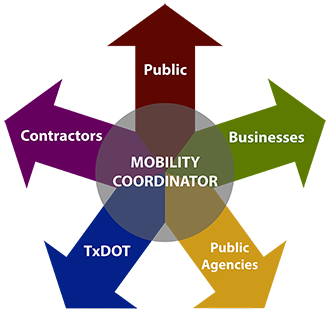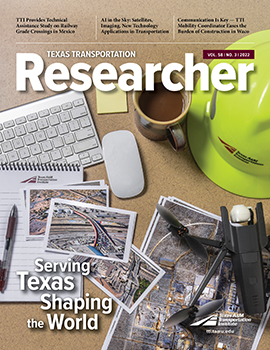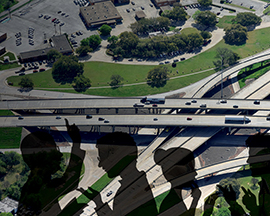Since 2012, the Texas Department of Transportation (TxDOT) has conducted the My35 Construction Project along I-35 in Central Texas. Called “Main Street Texas” for the vital role the corridor plays in international commerce, I-35 is host to hundreds of thousands of cars and trucks each day.
Comprising 17 separate construction projects, the 96-mile stretch between Hillsboro and Salado marks the section overseen by TxDOT’s Waco District, and each project has had its own set of challenges. As TxDOT implemented improvements — which included reversing frontage roads, adding main lanes, and rebuilding bridges across the Brazos River — the Texas A&M Transportation Institute (TTI) has lent considerable technical and outreach support in the past decade.

In roadway construction efforts, especially ones as complex and far reaching as My35, more than motorists are impacted by construction work zones. Businesses are affected, too. This can, understandably, make for serious concerns from business owners.
It’s Not Just What You Say…
“That’s where the mobility coordinator comes in,” explains TTI Research Engineer John Habermann, who’s served in that role in the Waco District since 2013. “I’m essentially an unbiased ombudsman whose job it is to listen to stakeholders’ concerns, represent the department’s objectives, and offer technical recommendations.”
Wearing several hats at the same time can sometimes be a challenge. TxDOT’s overall goal is to improve safety and mobility along the corridor to facilitate long-term economic growth at the state and national level, as well as provide new opportunities for local growth to the communities along the corridor. And while they can appreciate that, business owners and homeowners impacted by construction have their own issues today that must be addressed. It’s striking a balance that makes Habermann’s job so challenging — and fulfilling, he’s quick to note.
“I like to visit with people, to hear their stories and even help them out when I can,” Habermann says. “By visiting with folks impacted by the My35 Project, I can help them understand what’s going on, set their expectations about how long the work is to take, and maybe even defuse some tension for all involved.”
Public presentations, one-on-one meetings, conference calls, and construction and traffic know-how — these are the tools of Habermann’s trade. And they’ve led him to some experiences he might not otherwise have had.
Other Roads, New Challenges
In keeping with TTI’s education mission as part of The Texas A&M University System, Habermann reached out to Baylor University and has mentored some two dozen college students since 2014, giving them real-world experience in TTI’s Waco Office. Students learn about potential public-sector jobs that sometimes get lost among the glitz and glamor of private-sector pitches. Baylor University regularly requests Habermann’s input for its Advanced Public Relations course, where he answers student questions about career opportunities in public service.
In 2021, Habermann led an intercollegiate team to recommend ways for transportation professionals, often unknowingly on the front line of the war against human trafficking, to better recognize when they encounter victims during the course of their jobs. He’s helped develop materials for this group to increase their awareness and enlist them in the fight. (See https://www.hothtc.org/.)
“All of us in the transportation field want to make a difference,” Habermann says. “I can honestly say I’m making a difference through the coalition, and nothing in my career has been as fulfilling as this work is.”


